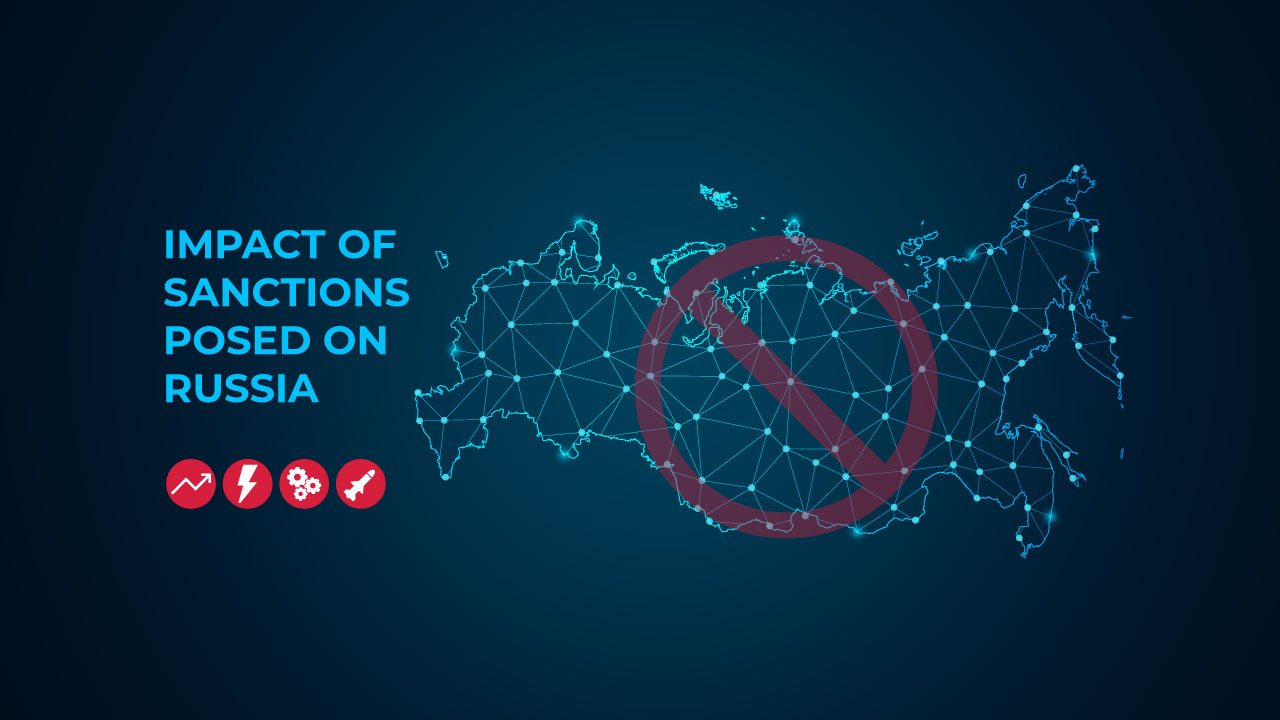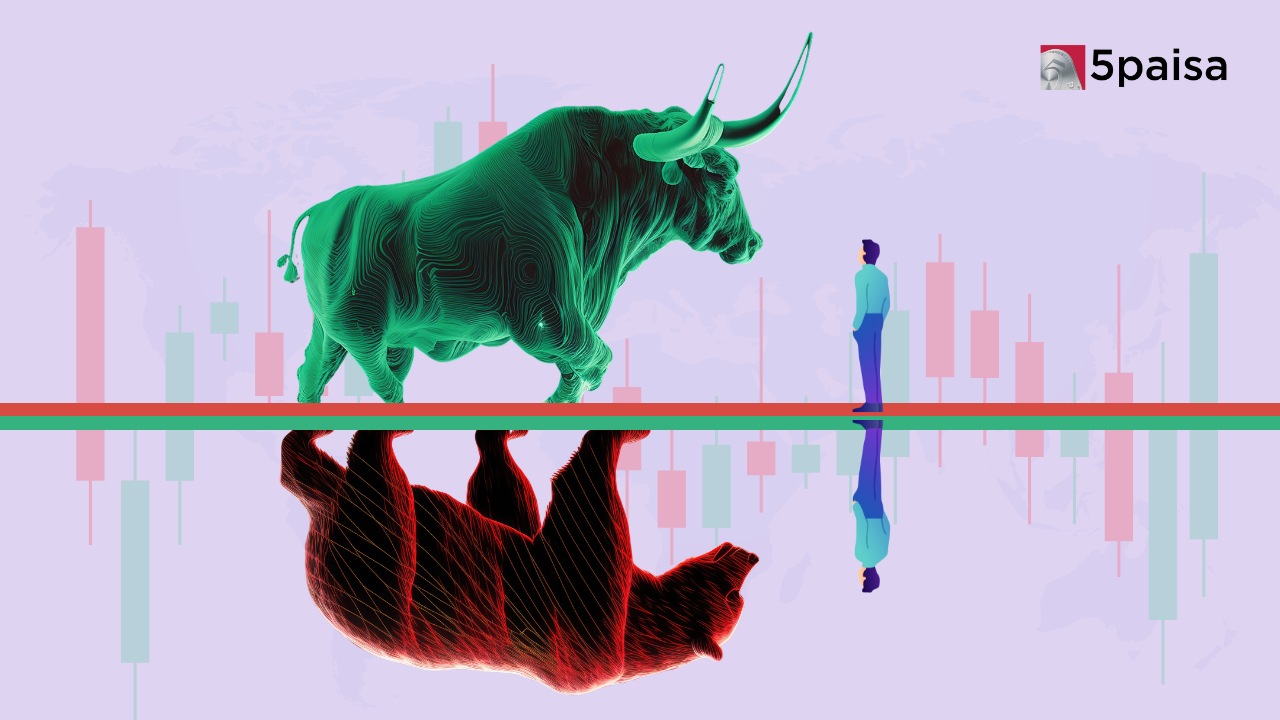Nifty Prediction For Tomorrow - 02 January 2025
How sanctions posed on Russia will Impact Globally?

Last Updated: 2nd June 2022 - 04:07 pm
Amid the Russia-Ukraine conflicts, the Brent Crude oil prices went up by 74% YTD. Whereas, the Urals-Brent differential was heading to the largest drop in history at approximately $20/bbl because of the threats of international sanctions.
If we will look back in history, we will realize that the chances of worsening of the economic situations are significantly less. In 2008, when Brent crude prices peaked at $145.7/bbl the pump price of Gasoline was 6480 RMB/ton in China and $4.17/gallon in the U.S. when the real GDP growth for China was 11.5% and for the U.S. was 3.9%. After six months the crude oil prices significantly dropped by 74%. Even in 2012 and 2014 when oil prices reached their peak it was observed that after a few months the price dropped significantly.
If we compare to the previous economic and geopolitical crisis the U.S. gasoline expenditure as a percentage of personal disposable income is still in a healthy position which states that consumer affordability is still in a healthy state compared to history.
Demand factors to look at in the coming months:
1. Diesel demand:
a) Potentially reduced runs from European refiners tightening diesel supply.
b) Reversal of gas-to-oil switching
2. Gasoline demand:
a) Signs of demand destruction – most sensitive to higher oil prices
b) Summer driving season ahead in the US
c) Post-Ramadan in Asia
3. Jet fuel demand:
a) Opening up as Omicron weakening.
Russia majorly exports Oil. It also exports commodities like metals, fertilizers, and wheat. And it largely imports machinery and equipment, chemicals, and food. Russia’s share of global commodities consumption is less than 5% whereas it has a greater share in global production. Its net exports percentage of global consumption is also high especially in oil and gas.
Oil and Gas are 60% of Asia’s energy needs. Oil is 50% of the total energy mix in the Asia-Pacific region vs 58% Globally. Gas is 7% of the total energy mix in Asia-Pacific nations vs 13% Globally. The dependence on coal is higher in Asian-Pacific countries.
If oil averages $100/bbl in 2022, the GDP impact varies from 0-2% for different Asian economies. Given the significance of Russia's crude oil supply to the global oil market, there isn’t enough spare capacity in the global oil chain to make up for the supply shortfall. For gas, 40% of Europe’s gas demand is via imports from Russia, and stopping the Russian import flow will lead to the energy crisis in Europe, hence the chances of imposing a sanction on Russian gas by the EU appear low. For China, Russia accounts for 15% of total crude oil imports and 10% of China’s total gas imports.
Impact on China:
China’s import dependence in 2021 for crude oil was 73%, natural gas was 44% and coal was 11%. In the near term, China’s economy will not be adversely impacted, but will still feel the ripple effect of surging energy prices to some extent and face upward risk in inflation, mainly on PPI. China to place energy security to a higher level of priority, and the government will take a more pragmatic approach to achieve its long-term carbon neutrality goal.
What if Europe bans Russian oil imports, but China’s oil imports from Russia are unaffected?
In 2021, Russia exported ~2.7mb/d of crude oil plus condensate and ~1.7mb/d of refined oil products to Europe. The 2.7mb/d supply shortfall in the crude oil market can barely be met via the existing spare capacity OPEC+ has, which is estimated at approx. 3mb/d currently, plus ramp-up of US shale oil producers.
The oil prices will likely reach $130-140/bbl for an extended period until there is any progress on the supply ramp-up. Buyers and traders are unwilling to bid for Russian crude, which is evident by the fact that Urals (Russia crude) is trading at a $20/bbl discount to benchmark Brent – deepest discount vs Brent in history.
What if All Russian gas exports are banned, including to Europe and China?
The energy prices might soar to unprecedented levels that could lead to the global economic crisis. The world will have to rely on other gas suppliers via LNG, e.g., the US, Qatar, Australia, etc. However, LNG alone will not be enough to offset the supply shortfall from Russia and the world will have to call upon other energy sources, e.g., coal, nuclear to fill the gap on energy supply for power generation that were fed by natural gas.
What if Sanctions are posed on Russian coal export?
If sanctions are posed on Russian coal exports, and China couldn’t purchase coal from Russia, there would be upside risks to coal prices, given China’s import from Russia accounts for 1.3% of China's total demand in 2021, filling the gap from China stopping the purchase of Australia coal.
What if Sanctions are posed on Russian Aluminium export?
Russia exports over 70% of its aluminum production (at ~3.9mt). 41% of Russia's production goes to Europe, or 1.6mt. This accounts for approx. 16 percent of Europe's total aluminum consumption. 24% of Russia’s aluminum output is shipped to Asia and 8% to the US. Russia produced 3.8mt of aluminum in 2021 or about 6% of the world total. Despite Russia accounting for 23% of China’s total aluminum imports, it accounts for less than 1% of China's aluminum demand.
If there’s a sanction on Russia’s aluminum export, the overseas market would see a deficit. This could drive up overseas aluminum prices, posing a premium over China's domestic prices. As a result, China's aluminum export might increase, leaving tightness in the domestic market, and indirectly lifting China's aluminum prices.
What if there will be no sanctions posed on Russian Aluminum export?
In 2022, the global aluminum supply deficits are expected to persist and further production growth will largely depend on ex-China, given China’s production cap under the decarbonization focus. The protracted global aluminum deficits are expected to continue driving up the price.
Impact on India:
In the last 12 months, India net imported 1.25bn bbl of oil. Pre-Covid, this was 1.4bn, and as the economy opens up, can be at 1.5bn bbl/year. At the current Brent crude price of $120/bbl, $40 above Q3FY22 average, this adds $60bn to India's import bill.
Higher crude also pushes up prices of gas, coal, edible oil, and fertilizers.
A large BoP deficit if sustained necessitates a significant INR correction. However, RBI has the ammunition to shoulder short-term pressure.
The industry remains the largest consumer of energy needs in India; much of this gets passed through. Households directly consume nearly 1/3rd of oil in India. In overall energy needs as well, Residential, Agri and Transport add to 41% of all energy need.
- Performance Analysis
- Nifty Predictions
- Market Trends
- Insights on Market
Trending on 5paisa
Market Outlook Related Articles
Disclaimer: Investment in securities market are subject to market risks, read all the related documents carefully before investing. For detailed disclaimer please Click here.
 5paisa Research Team
5paisa Research Team
 Sachin Gupta
Sachin Gupta




